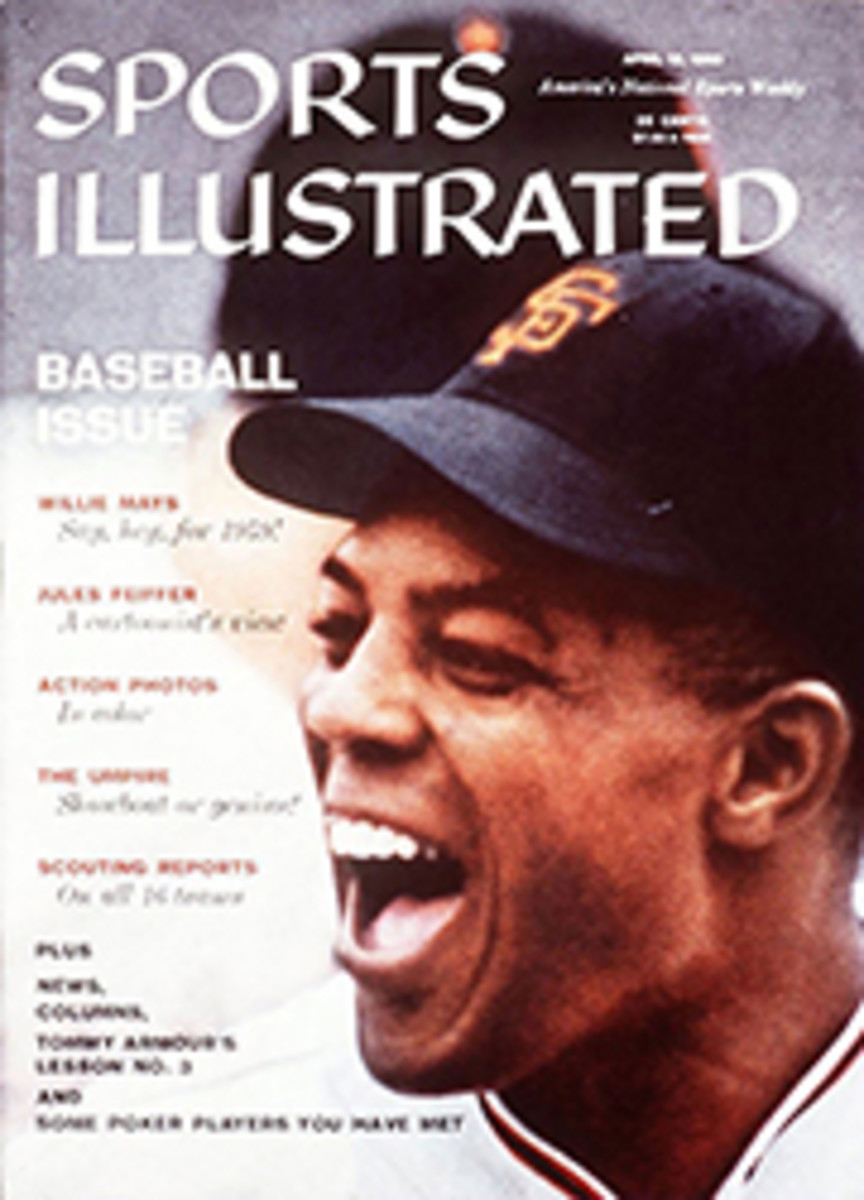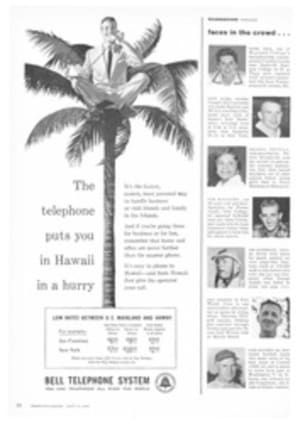
WASHINGTON SENATORS
STRONG POINTS
The only attraction that keeps that small group of fans wandering back to Griffith Stadium and retains the franchise in Washington is the batting prowess of Roy Sievers. The team's one-man offensive show, Sievers hit one-third of the Senators' home runs (39) and knocked in 108 runs to rank third-best in both categories in the American League. Otherwise, the sole pretense of power Washington can boast of with a straight face comes from two 6-foot 5-inch swingers, Right Fielder Jim Lemon (26 homers) and First Baseman Norm Zauchin. Standing a full foot shorter in the batter's box, tiny Albie Pearson stroked enough singles and doubles to win the league's Rookie of the Year award; because of him, the Senators have an outfielder who can run as well as hit. Scrappy Clint Courtney, who doesn't let the Washington lethargy affect him too much, gives the Senators a solid major league catcher who hits an occasional long ball. The nicest thing to happen in Washington since Dolley Madison was the development of Submarine Pitcher Dick Hyde into the top reliever in baseball. He wasn't too sharp this spring, but last year he won 10 games and saved 19 others to account for just about half the Senators' wins. On top of that, he had a remarkable 1.75 ERA. The long-relief man for the team, Tex Clevenger, appeared in the most games in the league (55) and won nine of them. Pedro Ramos and Camilo Pascual, the Senators' only starting class pitchers, are both able young men—so able, in fact, that the Yankees have expressed interest in both of them.
WEAK SPOTS
They still pay off in baseball on hitting, pitching, fielding and a few other talents like those. The Senators don't have much of any of them. Once again, they finished last in both leagues in pitching and batting, and nothing Washington did over the winter and spring seems likely to change that. New additions Reno Bertoia and Ron Samford have lifetime major league batting averages of .239 and .206 respectively. Infielders Ken Aspromonte and Jose Valdivielso can stop a ball but not hit one. Reserve outfielders Faye Throneberry and Jim Delsing don't scare many pitchers when they walk up to the plate. Jim Lemon hits home runs but he strikes out far too often, and batted only .246 last year. And so on down the line. Once you get past Ramos and Pascual, the list of starting pitchers fades into negligibility. Russ Kemmerer is considered the third man, but he lost 15 games and allowed 4.62 earned runs a game last season. Beyond him there's some hope, but mostly an aching void. Sievers and Lemon are not good outfielders, to phrase it gently. Too many balls that should have been stopped have been skipping through the infield for years. Herb Plews plays second base because he can hit, which is a sad commentary on the hitting skills of the other infielders.
ROOKIES AND NEW FACES
In an all-out effort to get some youth and speed on the team, the Senators finally got around to trading their old third-base fixture, Eddie Yost, along with Shortstop Rocky Bridges, to Detroit for Third Baseman Bertoia and Shortstop Samford. Neither of the newcomers has proved he can hit major league pitching but both can run and field. J. W. Porter, a bonus baby nearly a decade ago, came from the Indians, where his only statistic of note showed 19 RBIs on 17 hits. He is a versatile player who can catch, play first or the outfield. Chuck Stobbs, once the ace of the staff, is back again, hoping to regain his control now that he's wearing glasses. Rookie Center Fielder Bob Allison, a former fullback who runs well and can throw, has the hitting potential but needs more experience. The same is true of Outfielder Dan Dobbek, who has been in the Army for two years. Twenty-two-year-old left-hander Jack Kralick was the most promising rookie pitcher this spring.
THE BIG IFS
The Senators could have a reasonably successful year—that is, for them—if a number of delightful things occur all at once. If, for instance, Norm Zauchin could recover his pull-hitting form and hit a lot of home runs. Or, in case Norm doesn't, if one of the reserve or rookie outfielders could hit well enough to move Roy Sievers to first base. If Jim Lemon could have a big year in everything except strikeouts, and the glovemen in the infield start to use their bats. If Chuck Stobbs's glasses do the trick; if newcomer Billy Loes, the temperamental righthander with just about every pitch in the book, will feel he's well enough to pitch. If and if and if...then the Senators' summer won't be quite as long as usual.
THE OUTLOOK
Manager Cookie Lavagetto knows he is not going to set the world on fire, or even singe it, with these Senators. If there is a surer prospect than the Yankees finishing first, it's the Senators finishing last. Should they win a few more times than last season, then that will be all Washington can expect to do until more money is spent on developing young talent.
[originallink:10490241:43241]
PHOTO
WASHINGTON'S BIG STICK IS CARRIED BY BIG ROY SIEVERS, WHO IN THE PAST TWO YEARS HAS HIT 81 HOME RUNS FOR THE LAST-PLACE SENATORS
PHOTO
SIEVERS
PHOTO
PEARSON
PHOTO
COURTNEY
PHOTO
LEMON
PHOTO
BERTOIA
PHOTO
SAMFORD
PHOTO
ZAUCHIN
PHOTO
PLEWS
PHOTO
RAMOS
PHOTO
PASCUAL
PHOTO
HYDE
PHOTO
KEMMERER
ILLUSTRATION

